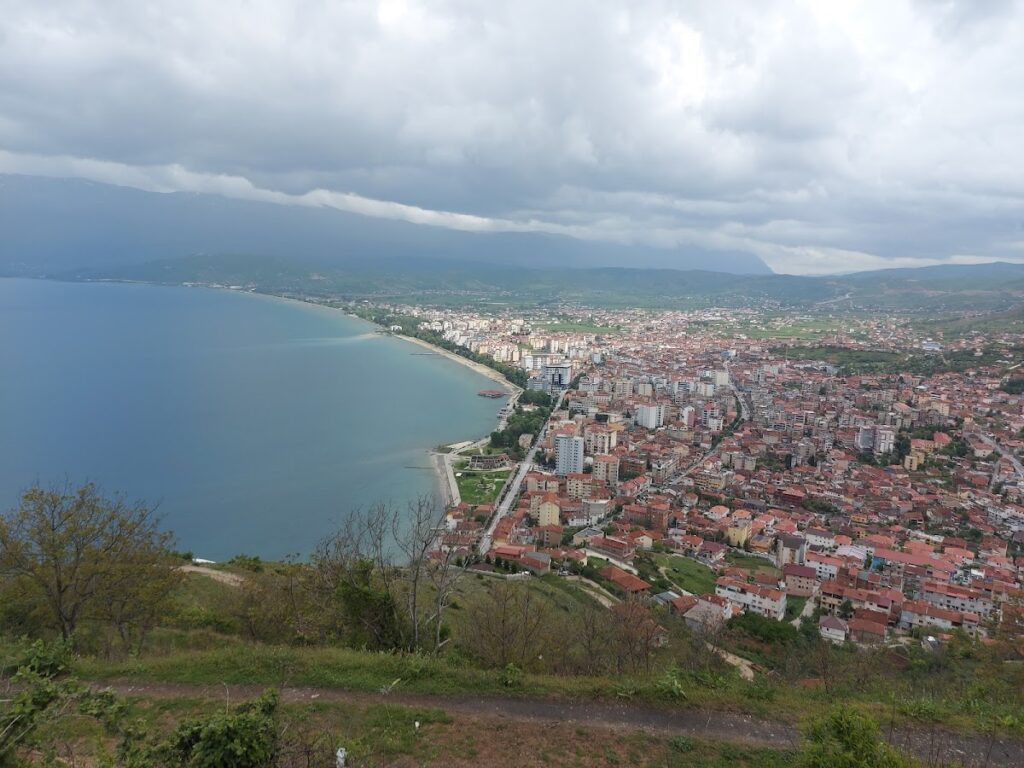Pogradec Fortress: An Illyrian and Byzantine Stronghold in Albania
Visitor Information
Google Rating: 4.1
Popularity: Low
Google Maps: View on Google Maps
Country: Albania
Civilization: Unclassified
Remains: Military
History
Pogradec Fortress is situated in the municipality of Pogradec in southeastern Albania. It was originally established by the Illyrian people, likely connected to the Enchele tribe in the centuries following the 5th century BCE. Some scholars associate this site with the ancient city known as Enkelana, pointing to its early significance in the region.
The fortress reached its height of importance between the 3rd and 2nd centuries BCE, a period before the Roman conquest of Illyria. During this time, it served as a fortified settlement amid a landscape of competing local powers. Despite the growing influence of Rome, the site remained inhabited through the first three centuries of the Common Era and into late antiquity, reflecting a continuous occupation that withstood shifting political circumstances.
Evidence of activity during the early Byzantine era is found in coins bearing the image of Emperor Justinian II, who reigned from 685 to 695 and again from 705 to 711. These coins suggest the fortress remained an occupied and possibly strategic location well into the 7th and early 8th centuries.
In the 10th century, a notable reconstruction effort took place under Byzantine Emperor John I Tzimiskes, who ruled from 969 to 976. The fortress was deliberately rebuilt to serve military objectives during this period. Social patterns changed as well; the civilian population relocated from the hilltop fortress to the plain along the lakeshore, a shift that is preserved in the area’s Slavic name meaning “below the fortress.”
By the 12th century, Pogradec Fortress began to lose its strategic value, likely because of the territorial expansion of the Second Bulgarian Empire. This decline resulted in the fortress’s abandonment. Over time, it became recognized as a medieval ruin, with its ancient and medieval significance fading from active memory until later archaeological interest.
Excavations uncovering its Illyrian origins were conducted from 1969 to 1973 under the leadership of Skënder Anamali. These studies helped reveal the layers of history hidden at the site. More recently, from 2011 to 2019, the fortress was included on the UNESCO tentative list as part of the cultural landscape connected to the Ohrid region. Plans have been made for restoration projects funded by the European Union and local authorities to conserve and develop this historic site.
Remains
The fortress occupies a prominent hill named Vár-hegy or Maja e Kalasë, rising approximately 898 meters above sea level and about 205 meters above Lake Ohrid. Its layout follows the contours of the hill, resulting in an irregular shape adapted to the natural terrain rather than geometric precision.
Excavations have revealed two distinct sections of the original ancient defensive walls. These walls, dating back to the Illyrian period, show construction from roughly shaped stones that vary in thickness between 1.4 and 1.8 meters. The builders used a technique combining larger stones with smaller stones, pebbles, and a mortar made from crushed brick powder and stone fragments to bind the structure together.
Among the fortress’s features are the foundations of a rectangular tower, indicative of its defensive purpose. The tower’s base has been uncovered in situ, providing insight into the fortification methods of the time.
A variety of artifacts have been recovered during archaeological work. These include grey pottery decorated with Greek stylistic influences, black-glazed vessels, and specific types of drinking cups known as skyphoi and kotylai, dating from the 5th to 3rd centuries BCE. Later ceramics bear local potters’ marks, documenting the continued occupation and cultural exchanges in subsequent periods. Before the formal excavations, finds such as ashlar blocks (finely cut stone), bracelets, bronze fibulae (brooches), and black-figure skyphoi were already reported on the site, underscoring its long history.
Today, portions of the fortress walls and the tower’s foundations remain visible, while ongoing conservation efforts aim to protect and uncover further structural elements buried beneath the surface. These preserved remains offer tangible links to the Illyrian origins and Byzantine adaptations of the fortress, illustrating the site’s changing role across centuries.







